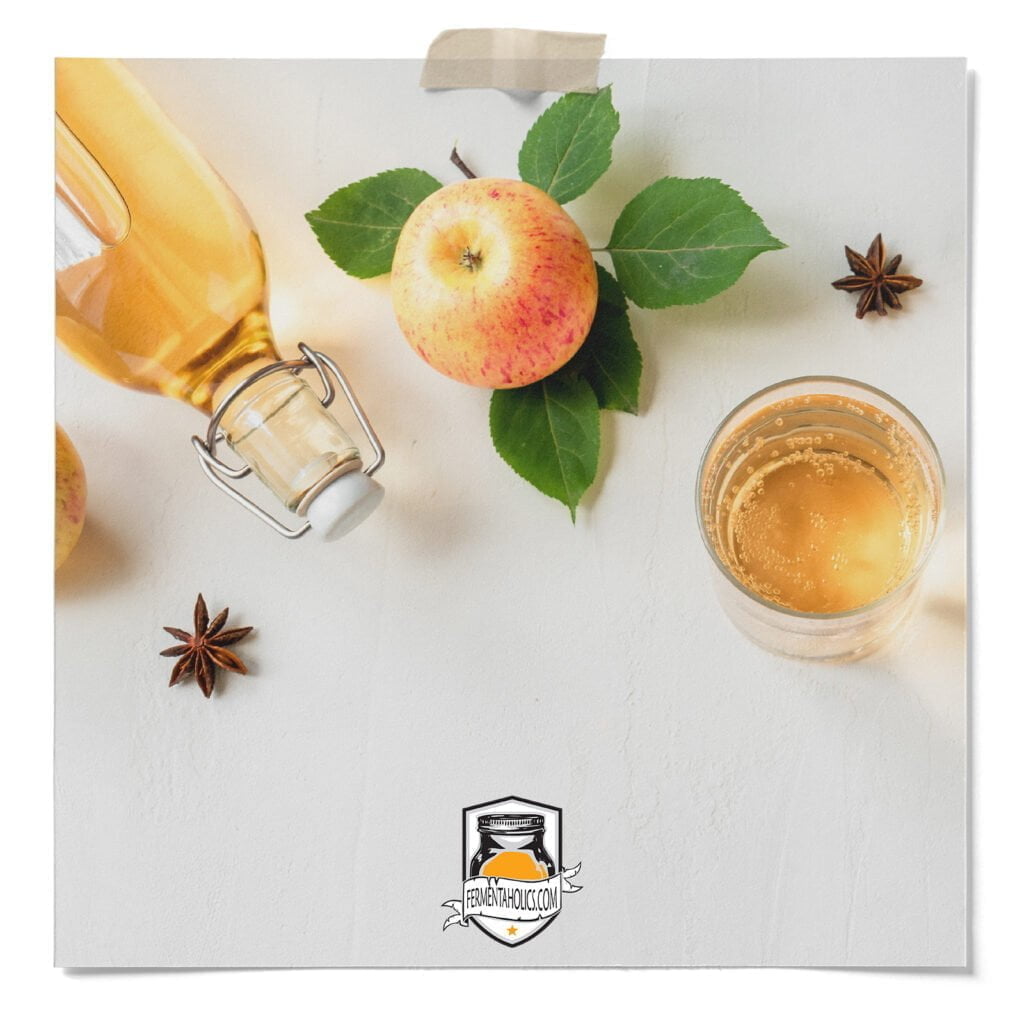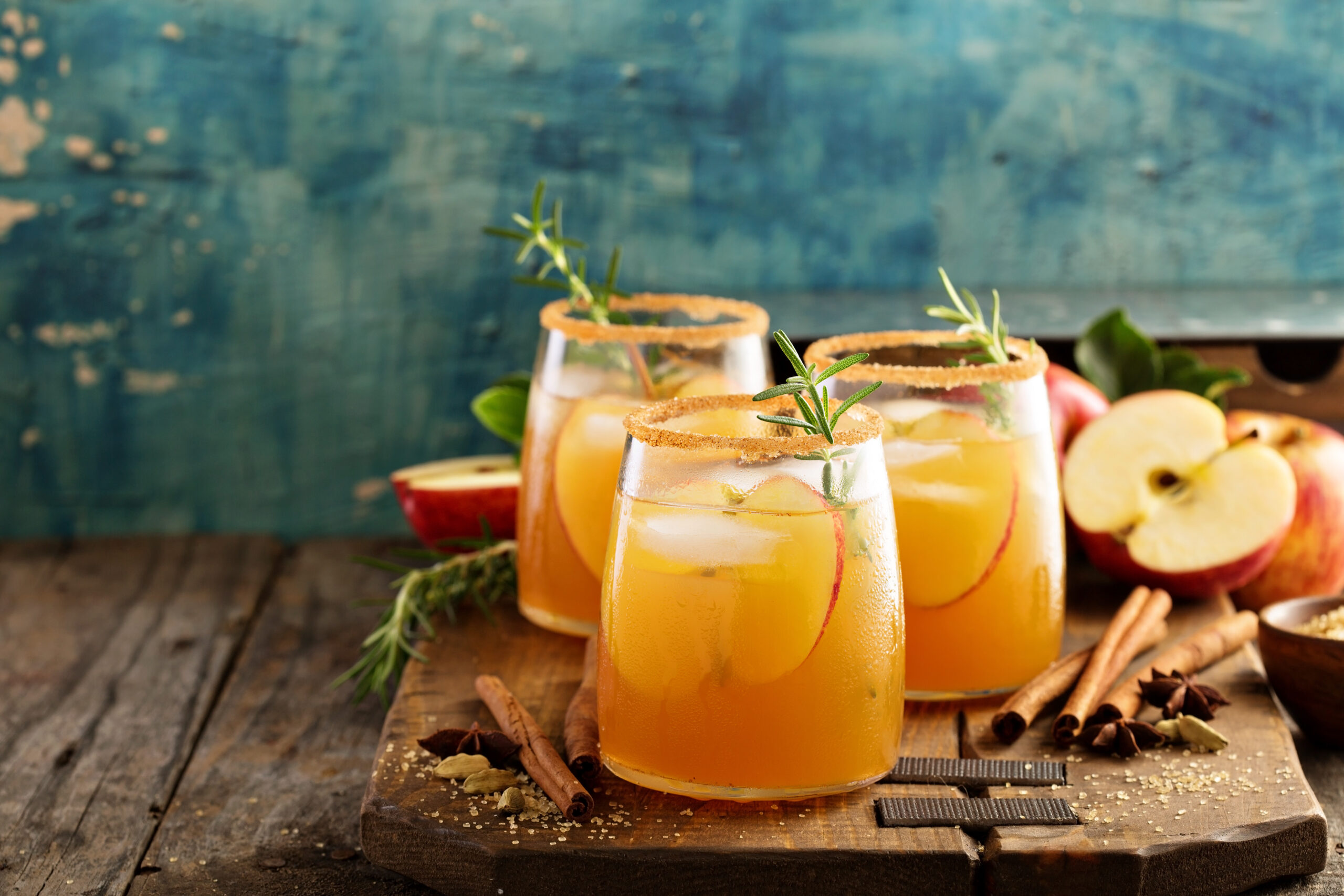
Fall breeze arrives and with just one gust seems to sweep everyone off their feet. It’s not just the weather that creates this feeling but the fragrant, delicious comfort foods. Spiced apple cider is one of the most special and reminiscent for me. I remember, as a kid, hanging out with my dad, drinking hot apple cider through cinnamon sticks straws. This kombucha recipe does such a great job re-creating that warm, fuzzy feeling that apple cider brings and is a fall must-have!

It’s important to note that making homemade kombucha is almost always a two-step fermentation process. Brewing kombucha is only a one-step process for those who prefer an unflavored flat kombucha. Otherwise, the steps consist of a primary fermentation and a secondary fermentation.
Primary fermentation is the first step of the kombucha brewing process. This is where your SCOBY transforms regular sweet tea into the tart and slightly sweet kombucha we love. At the end of this stage, you will have finished kombucha, but it will be flat and unflavored. Have you skipped this step? Then check out our guide on how to make kombucha at home, and for jun kombucha, see our post on how to make jun kombucha tea at home. Traditional kombucha is going to yield a bolder brew, while jun kombucha is milder and can be a bit tarter.
Secondary fermentation is the step where you bottle, carbonate, and flavor your kombucha with the addition of sugar and flavors. In this step, the finished kombucha from the primary is mixed with sugar, fruits, or other flavors before bottling it with specialized lids that can hold pressure, like flip-top bottles. The bottled kombucha is then left at room temperature for natural fermentation, where yeast carbonates the kombucha within the sealed bottle. The ideal temperature range for this process is between 75-85°F. The amount of time needed to carbonate within the bottle is highly tied to temperature, which can take anywhere from 2-10 days.
💡Since this recipe is for the secondary fermentation, to make this recipe, you’ll need to have kombucha that has finished the primary fermentation and is ready to bottle.
This recipe makes 7 16 ounce bottles of kombucha. Before beginning this recipe, prepare the following:
16 FL Oz Bottles
15
Minutes2-10 Days
Chamomile tea brewing instructions: Making a cup of chamomile tea is a simple process that produces a delicious and soothing beverage. With its gentle flavor and potential health benefits, chamomile tea is a wonderful daily addition. Making chamomile is as easy as steeping tea. By following the instructions below, you’ll have the perfect cup of chamomile tea to help you relax and unwind. Before you begin, gather all the necessary supplies from the following list. Once you have your supplies ready, follow these simple steps and get started:
3 Cups Unfiltered Apple Juice
3 Sticks Cinnamon
1-2 TBSP Candied Ginger
2 TSP Whole Cloves
1 Gallon Kombucha From A Finished Primary Fermentation
1 Sauce Pot
1 Funnel
7 16 oz Kombucha Bottles
First, we will make the concentrated hot apple cider. Add 3 cups of unfiltered apple juice, 3 cinnamon sticks, 1-2 tbsp candied ginger, and 2 teaspoons of whole cloves to a pot and let come to a rolling boil for about 2 minutes.
Remove from stove and allow mixture to cool to room temperature. Once fully cooled, strain out the mixture to remove the cinnamon sticks, cloves, and what’s left of the candied ginger if any.
Using a funnel, distribute the apple cider evenly to each of the bottles. This step is best done over the sink. There should be about 3-4 ounces of liquid in the bottom of each bottle.
Using a funnel again, slowly pour Kombucha from your brew jar into the bottles, ensuring there is about one inch of headspace left from the top of each bottle. The kombucha may foam up as you pour so be sure to pour carefully.
Tightly place caps on each bottle.
Keep your bottles at room temperature for 2-10 days depending on temperature.
Once per day, “burp” the bottles by removing the cap to allow built up pressure to escape and place the cap back on. The carbonation and pressure will rebuild so do not worry about it going flat. Do not forget this step each day as if you do, that Booch is going to spray all over you and your kitchen upon opening!
When happy with the flavor and fizziness of your brew (2-10 days at proper temperature), place your bottles in your fridge to chill and halt the fermentation.
Enjoy your Brew-tiful creation by the glass or use it in some of your favorite holiday foods as a dressing, cocktail ingredient, etc!
